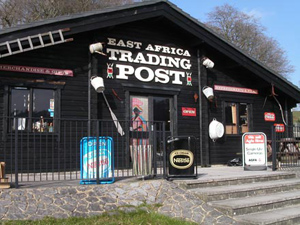March 26, 2007
Carbon Trading: History Repeating Itself?

By Michael D. Shaw
The Catholic Church was roundly criticized—and rightly so—for the practice of selling indulgences. Indeed, it spawned the Reformation. But even at its worst, this practice was never touted as a permission to commit sin, nor as a pardon of future sin. It would take the modern environmental movement to bring such commerce to the secular world. These new indulgences are called “carbon credits.”
Much as the selling of indulgences perverted the good works of almsgiving, trading in these carbon credits—carbon trading—hyped as a “market solution” to help the environment, is rather a feel-good measure that actually increases pollution and does nothing to solve the purported threat of climate change.
Let’s see how this works:
Reducing your “carbon footprint,” or the amount of energy you consume, starts with buying carbon credits. In other words, your money goes to a “carbon broker” who promises that, after taking a hefty commission, he will find a way to reduce carbon emissions somewhere on the planet equal to what you have released into the atmosphere because of flying or driving in your part of the world.
For example: Let’s say companies are required to reduce their emissions to X parts per million (ppm). The first business, company A, operates entirely on hydroelectric power and produces zero ppm. Similar-sized Company B operates on coal and produces an excessive 1.5X ppm. With carbon trading, dirty Company B pays A (who already doesn’t pollute) and gets the right to increase its pollution to 2X ppm through burning cheaper and dirtier coal. Of course, even though money changes hands, pollution is not decreased at all.
A far better expenditure for Company B would be to bypass the middleman, and simply install emissions control technology in its own plant, don’t you think?
Unfortunately, even when pollution is arguably reduced in the exchange, the programs either don’t work, or would require massive regulatory mechanisms to assure compliance. Consider the RECLAIM program, introduced by California’s South Coast Air Quality Management District (SCAQMD), in the 1990s.
RECLAIM allowed utilities and other major stationary sources to trade sulfur dioxide and nitrogen oxide oxide credits under a cap on total emissions, by paying owners of old, dirty cars about $600 per vehicle to take them off the road. Very modest reductions in emissions were observed during the first few years of the program, but problems were brewing.
The initial cap on emissions was set too high, since it was based on old data. As such, the credits gained by the polluters were too cheap, and discouraged investment in engineering controls. It was far cheaper just to buy people’s old cars.
However, the gravy train would not go on forever, and in the spring of 2001, the price of nitrogen oxide allowances got as high as $45,000/ton. In the midst of the hysteria provoked by the California energy crisis, SCAQMD hastily pulled utilities from the system, giving them a three-year grace period to return to compliance with traditional regulatory requirements.
Not surprisingly, there was rampant fraud whereby the bodies of old cars were retired, and the engines installed in other vehicles. In certain cases, grossly polluting facilities that should have just been shut down were allowed to remain in operation under the credit system, thus creating terrible point sources of air pollution—often in poor neighborhoods.
RECLAIM’s failure should have been an early wake-up call to carbon credit proponents, but their answer was only more government control, and “better program design.” Perhaps it would have been possible to better monitor the disposition of the old cars, but it frankly boggles the mind how intensive the calculations would have to be to constantly update the value of the credits based on the future air quality situation, while taking into account the effects of more virulent point sources, and weighing this against the purchase of engineering controls for the polluting facilities.
Simply stated, carbon trading allows people to continue to pollute and the atmosphere to continue to degrade. Non-polluters make money, but the air you and I breathe is no cleaner. In essence, carbon trading is the equivalent of an already overweight person consuming increased amounts of ice cream, while speciously arguing that he offsets this decadence with “carbohydrate credits” in the Third World. Of course, a famished child in Africa doesn’t eat this junk in the first place, revealing the fatuous nature of those who extol the virtues of these measures.
Consider, further, the actions of GreenSeat, a Dutch carbon-trading outfit that buys offsets from a foundation that plants trees in Uganda’s Mount Elgon National Park to soak up the carbon emissions of its rich Western patrons. Sounds like a great undertaking, right?
Sadly, expanding the park encroaches on land typically used by local farmers. As reported by the New York Times: “Villagers living along the boundary of the park have been beaten and shot at, and their livestock has been confiscated by armed park rangers.”
And even if you didn’t care about the fate of the villagers, the carbon-traders cannot possibly know the true impact of the project. Absent a sociological study of incredible complexity, it is simply impossible to predict with any degree of accuracy the actions of the thousands of people evicted from Mount Elgon National Park. Some of them may clear other areas of forest to continue farming. Others may overgraze the land around the park, causing soil erosion. Others may try to continue farming in the National Park. Some may move to the city and take up a higher carbon emitting lifestyle.
The environmental movement should be about more than making first world elites feel good about themselves, at the expense of the poor and unfortunate. Yet that is precisely what happens with carbon trading—as it happened 35 years earlier with the banning of DDT.

